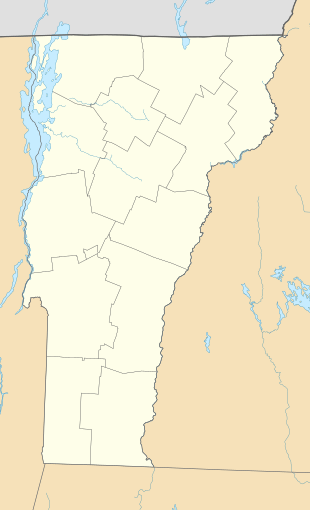Shelburne Farms
Shelburne Farms is a nonprofit education center for sustainability, 1,400 acres (570 ha) working farm, and National Historic Landmark on the shores of Lake Champlain in Shelburne, Vermont. The property is nationally significant as a well-preserved example of a Gilded Age "ornamental farm", developed in the late 19th century with architecture by Robert Henderson Robertson and landscaping by Frederick Law Olmsted.
Description and history
Shelburne Farms was created in 1886 by Dr. William Seward Webb and Eliza Osgood Vanderbilt Webb as a model agricultural estate, using money inherited from railroad magnate William Henry Vanderbilt. They commissioned landscape architect Frederick Law Olmsted to guide the layout of 3,800 acres (1,500 ha) of farm, field and forest, and New York architect Robert Henderson Robertson, to design the buildings. The estate was created by purchasing a large number of mostly agricultural properties, and then adapting the existing roads and lanes (some of which were public ways the Webbs petitioned to have closed) to fulfil the Webbs' vision for the estate.[3] The property was listed on the National Register of Historic Places in 1980, and was designated a National Historic Landmark District in 2001.[2][1]
Shelburne Farms was incorporated as a nonprofit educational organization in 1972 by descendants of the Webbs. Nearly 400 acres (160 ha) of sustainably managed woodlands received Green Certification from the Forest Stewardship Council in 1998. The farm's grass-based dairy supports a herd of 125 purebred, registered Brown Swiss cows. Their milk is made into farmhouse cheddar cheese.[4] The farm serves as an educational resource by practicing rural land use that is environmentally, economically and culturally sustainable. Visitors may enjoy the walking trails, children’s farmyard, inn, restaurant, property tours and special events.
See also
References
External links
|
|---|
| | Topics | |
|---|
| | Lists by states | |
|---|
| | Lists by insular areas | |
|---|
| | Lists by associated states | |
|---|
| | Other areas | |
|---|
|
-
 Category Category
-
 Portal Portal
-
 WikiProject WikiProject
|
|
|
|---|
| | Landmark homes | |
|---|
| | Landmark commercial enterprises | |
|---|
| | Military landmark | |
|---|
| | Government and Political action landmarks | |
|---|
| | Scientific landmark | |
|---|
| | Architectural landmarks | |
|---|
|

